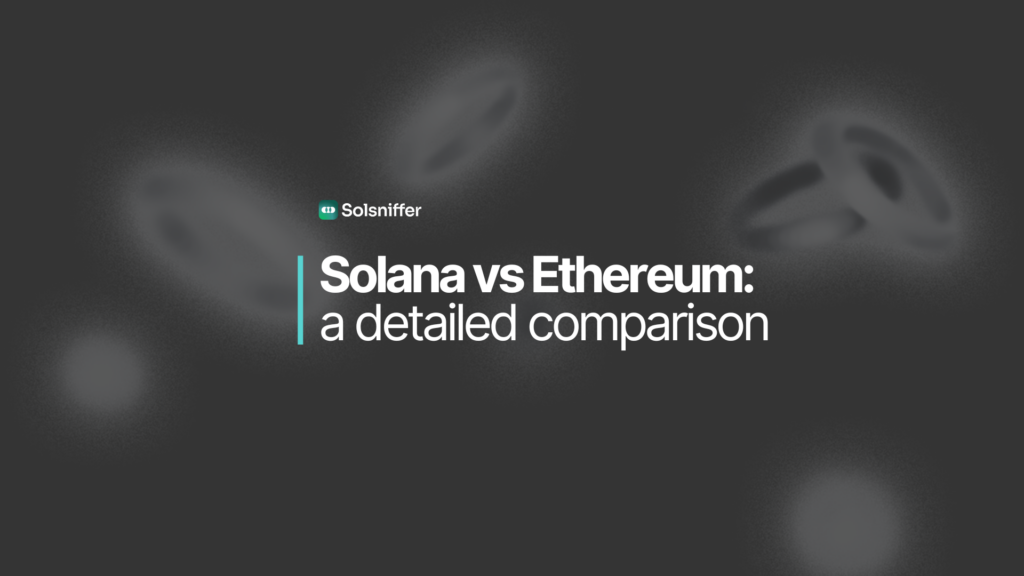The battle between Solana and Ethereum has been a focal point in cryptocurrency, often characterized as a David vs. Goliath scenario. Both platforms offer distinct advantages and have loyal followings, but how do they truly compare? Below, we look at the key differences, tokenomics, use cases, and future trajectories of these two blockchain giants.
A Brief History of Ethereum and Solana
Ethereum: The Pioneer of Smart Contracts
Ethereum was introduced in 2015 by Vitalik Buterin, aiming to expand blockchain technology beyond Bitcoin’s limitations. It quickly became the go-to platform for decentralized applications (dApps) and smart contracts. Ethereum’s significant milestones include the publication of its whitepaper in 2014, a successful crowd sale, and the launch of its mainnet in 2015. Despite its success, Ethereum has faced challenges such as network congestion and high gas fees, prompting continuous upgrades and the transition from Proof-of-Work (PoW) to Proof-of-Stake (PoS).
Solana: The Speedster
Solana, founded by Anatoly Yakovenko in 2017, was designed to address Ethereum’s scalability issues. Leveraging a unique Proof-of-History (PoH) consensus mechanism combined with PoS, Solana can process thousands of transactions per second, significantly outpacing Ethereum. Since its mainnet launch in 2020, Solana has attracted developers and users with its fast transaction speeds and low fees, though it has also faced network reliability issues.
Key Features and Differences
Transaction Speed and Fees
One of Solana’s most significant advantages is its transaction speed. Solana can handle up to 50,000 transactions per second (TPS), whereas Ethereum, even after its PoS transition, typically processes around 30 TPS. Solana’s low transaction fees, usually a fraction of a cent, make it an attractive option for micro-transactions and high-frequency trading on a crypto trading platform. In contrast, Ethereum’s gas fees can range from $10 to $50, making it less suitable for smaller transactions.
Consensus Mechanisms
- Ethereum: Ethereum’s PoS system allows validators to earn rewards by staking ETH. While this has improved energy efficiency and scalability, the network still relies heavily on layer-2 solutions to manage congestion.
- Solana: Solana’s PoH, paired with PoS, timestamps transactions to enhance efficiency and speed. This innovation allows Solana to maintain high throughput but has raised concerns about centralization and network reliability, which are crucial aspects of crypto security.
Ecosystem Maturity
Ethereum boasts a well-established ecosystem with many dApps, DeFi protocols, and NFT marketplaces. Its ecosystem’s maturity is reflected in its Total Value Locked (TVL), which exceeds $50 billion. Solana’s ecosystem is rapidly growing, with notable projects like Jupiter, Pump.fun, Raydium, MarginFi, Magic Eden, Solsniffer (a token scanner app that detects suspicious tokens on Solana) and Solend. Although Solana still lags behind Ethereum in terms of TVL and developer community size.
Popular Use Cases
Decentralized Finance (DeFi)
- Ethereum: Dominates the DeFi space with protocols like Aave, Uniswap, and MakerDAO, which together hold billions in TVL.
- Solana: Emerging as a strong contender in DeFi, with projects like Raydium and Serum offering fast and low-cost alternatives to Ethereum’s offerings. Solana is also gaining attention in smart money trading due to its low fees.
Non-Fungible Tokens (NFTs)
- Ethereum: Home to major NFT marketplaces like OpenSea and Rarible. Projects such as CryptoPunks and Bored Ape Yacht Club have seen enormous trading volumes, though high gas fees remain a challenge.
- Solana: Gaining traction with lower fees, attracting projects like DeGods and Okay Bears. Platforms like Magic Eden are becoming popular for NFT trading, supported by a growing interest in crypto trading signals.
Web3 Gaming
- Ethereum: Pioneered the play-to-earn model with games like Axie Infinity but suffers from scalability and fee issues.
- Solana: Positioned as a leader for Web3 gaming due to its speed and low fees, with promising projects like Star Atlas and Aurory, making it a preferred choice for developers using a crypto data API for game integration.
Tokenomics of ETH and SOL
Ethereum (ETH)
ETH powers the Ethereum network, required for transaction fees, staking, and interacting with dApps. The introduction of EIP-1559 and the transition to PoS have added deflationary pressure, potentially reducing ETH supply over time. This has made ETH a contender for the best crypto coin to buy for long-term investors.
Solana (SOL)
SOL is used for transaction fees, staking, and governance within the Solana ecosystem. With an inflationary model, SOL issuance incentivizes network validators. Currently, there are around 440 million SOL in circulation, with a total supply capped at approximately 574 million. SOL’s growing adoption in various sectors could make it the next big meme coin, especially given its potential in hot meme coins markets.
Conclusion
The “Ethereum Killer” narrative around Solana highlights the competitive dynamics in the blockchain space. However, both platforms have proven their value and coexist successfully, each addressing different aspects of the blockchain trilemma. Ethereum remains the leader in terms of security and ecosystem maturity, while Solana excels in speed, low-cost transactions and for its potential to onboard mainstream users.
Understanding the differences between Solana and Ethereum can help investors and developers make informed decisions based on their specific needs and goals. As both platforms continue to evolve, their mutual success will likely drive further innovation in the blockchain industry.
Solsniffer, Secure Trading and Security on Solana
Solana token scanner: https://solsniffer.com/sniftokens/
Solana wallet portfolio tracker: https://solsniffer.com/snifwallets/
X (Twitter): https://x.com/solanasniffer
Telegram: https://t.me/solana_sniffer

